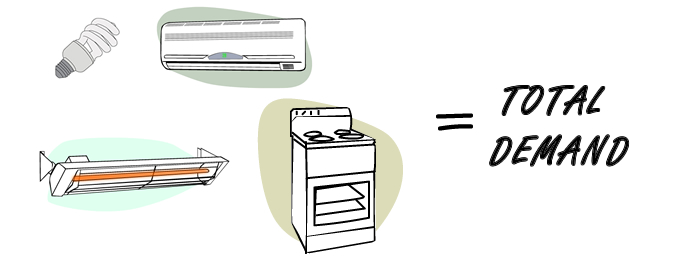
Electrical current demand
Electrical current is measured in 'amps' (short for amperes). The best way think of electrical current is as a sort of liquid flow. Electrical current flows through the different circuits in your home as it's needed.
Voltage, on the other hand, is the equivalent of pressure forcing the ‘electrical’ liquid through a circuit (which includes the light fitting, or vacuum cleaner you’ve plugged in). A really important number is the total amps drawn by the appliance you're using. This is called the 'demand' of the appliance.
How big a consumer are you?
You’re not really restricted in terms of how much power you can actually use - in part it depends on how deep your pockets are. Let’s take a typical domestic electrical installation:
| Electrical appliances | Current load |
| 20 lighting points | 3 amps |
| 16 power points | 10 amps |
| 2 x 1000 watt strip heaters | 6 amps |
| 7000 watt stove top/over | 14 amps |
| 5000 watt water heater | 20 amps |
The example of a domestic installation we took as typical has a total current demand of 53 amps. How much you're actually able to draw depends on your provider of electrical energy. They will have a limitation on 240 volt single phase supply. As a general rule anything much over 100 amps maximum demand is likely to be subject to special conditions. Of course industrial installations easily exceed this.
In most cases, if you do exceed the amount of current your home is expected to draw, you will blow the supply fuse which is designed specifically to limit the amount of current your home can draw. You should never touch this yourself - contact your energy provider if you believe the supply fuse to your home has been blown.

